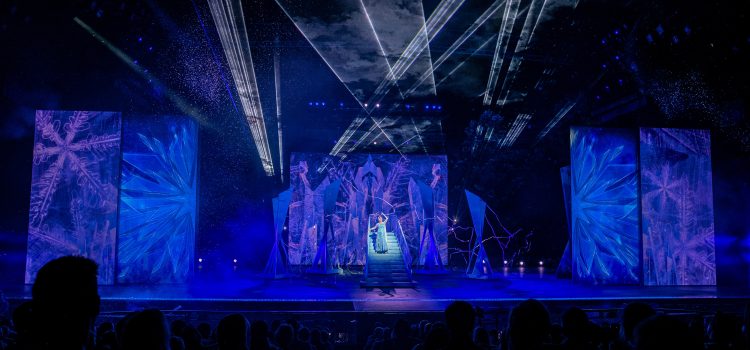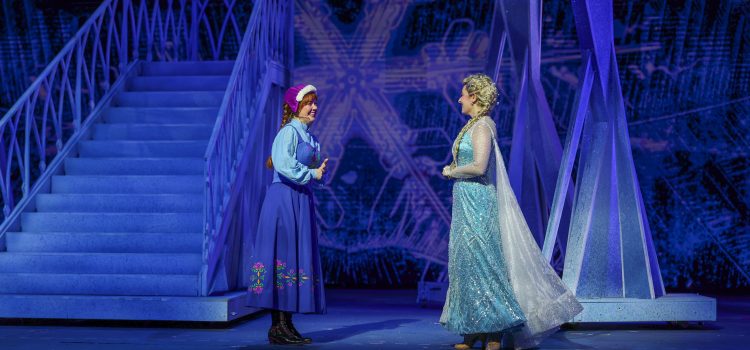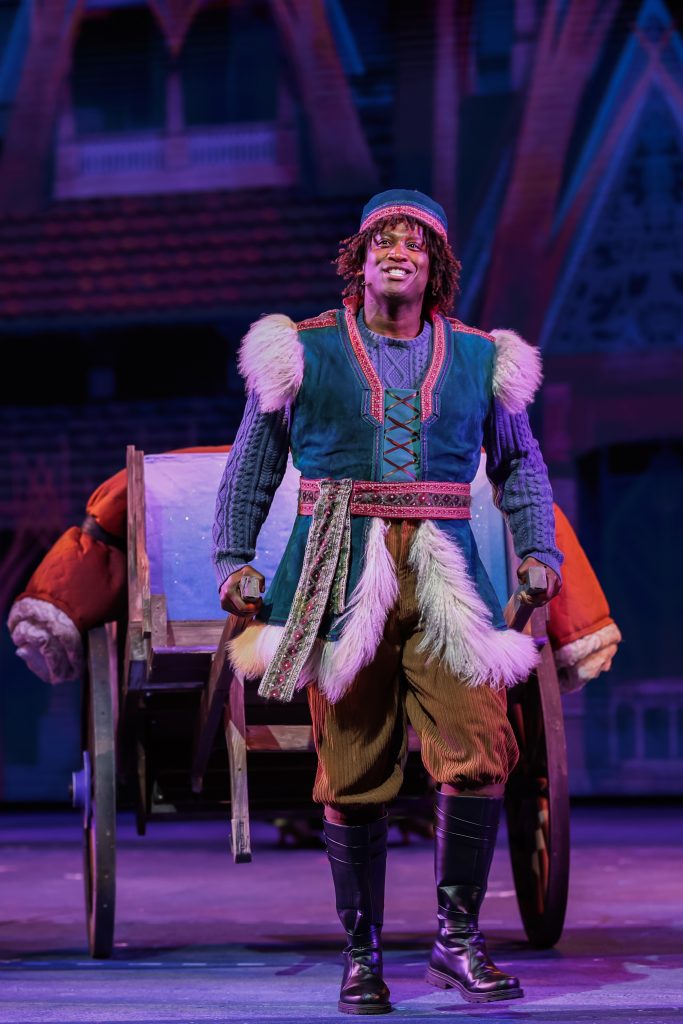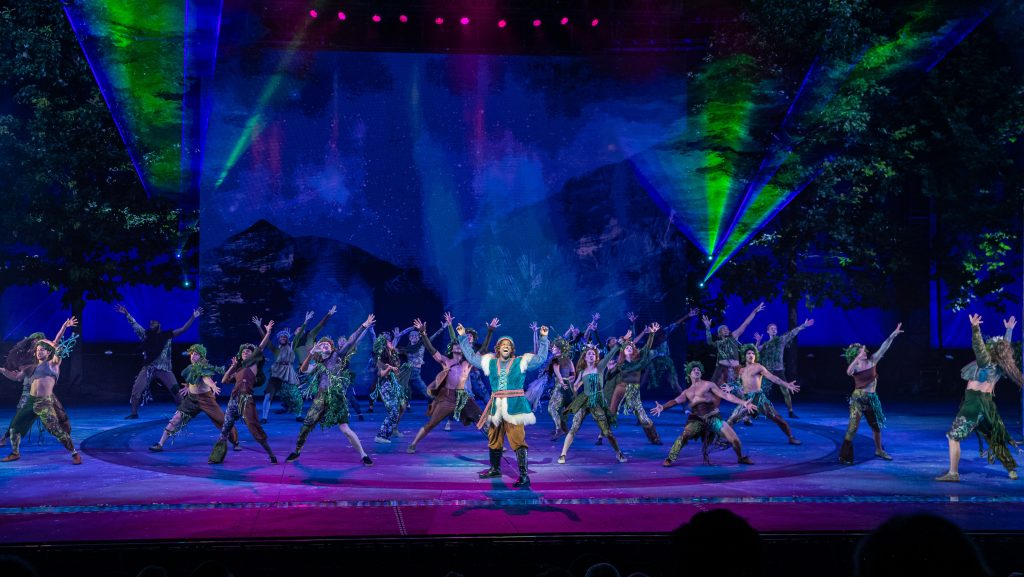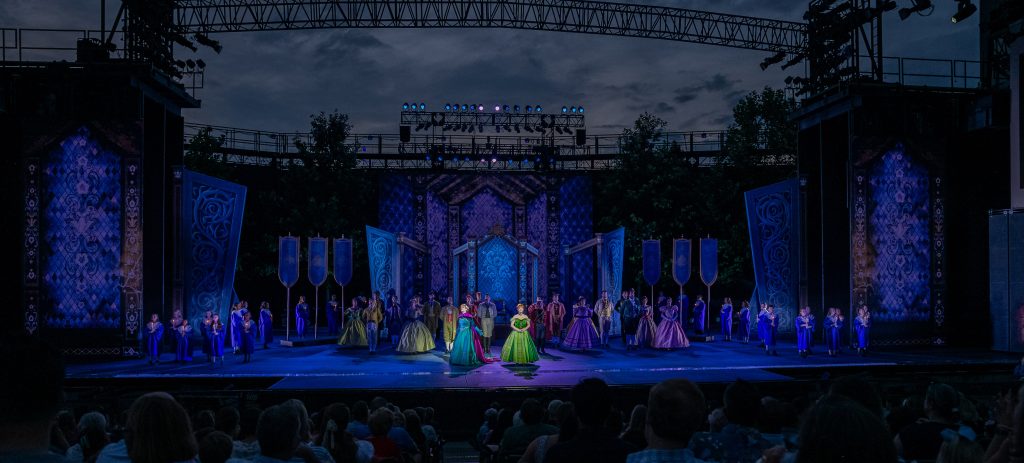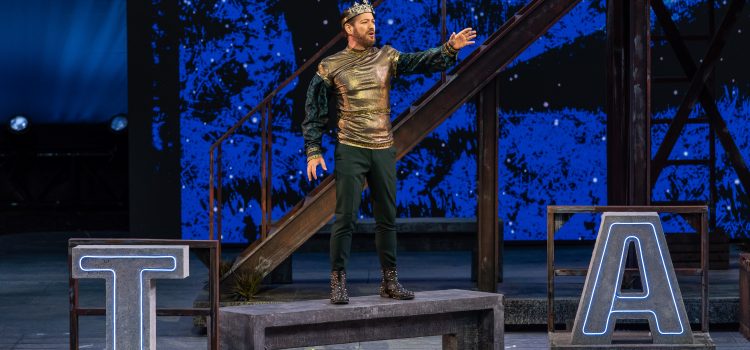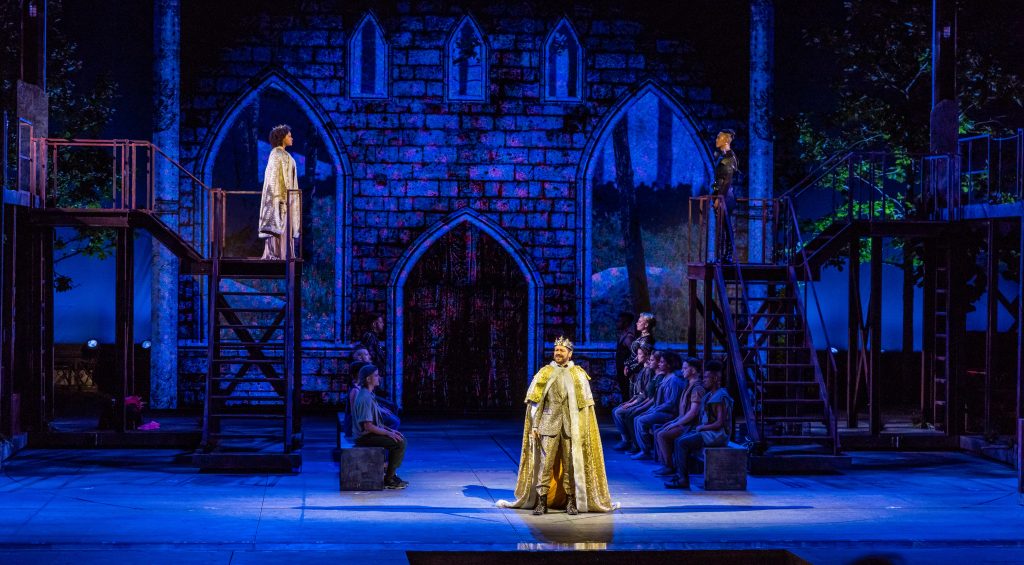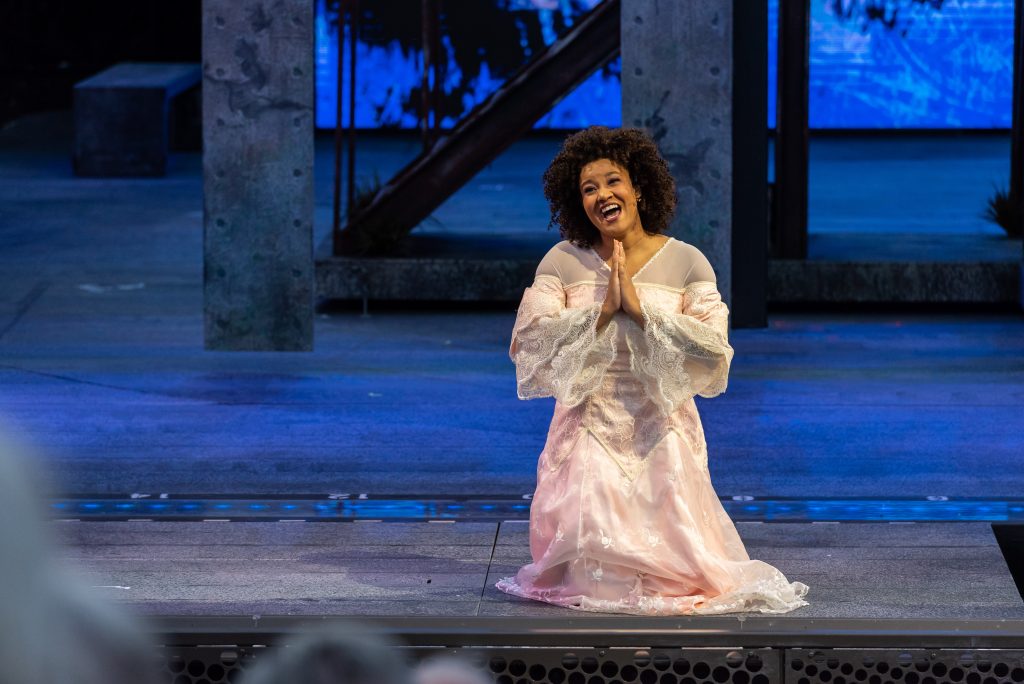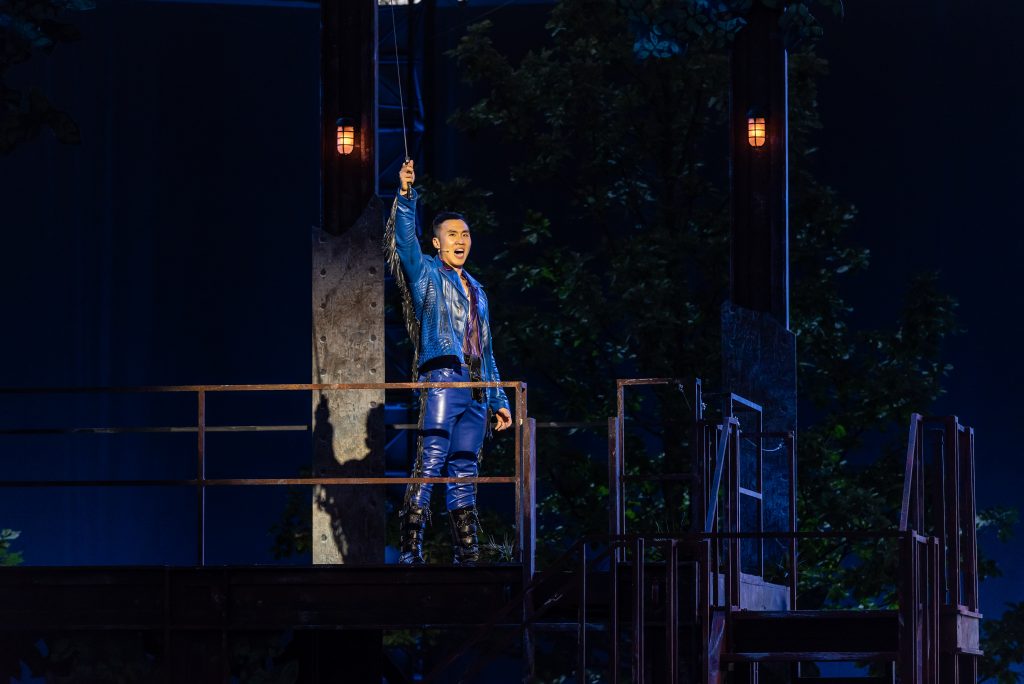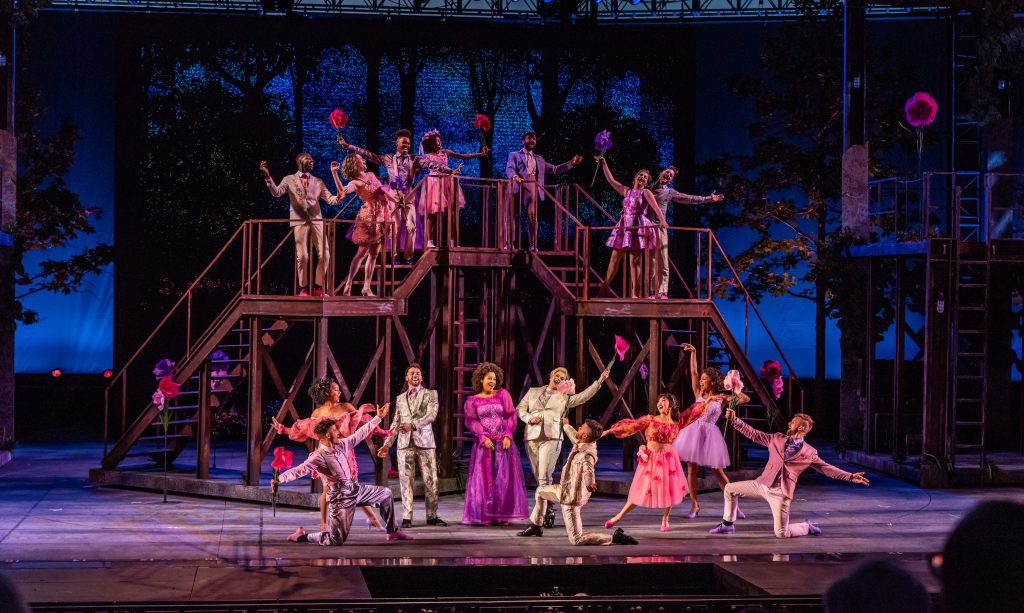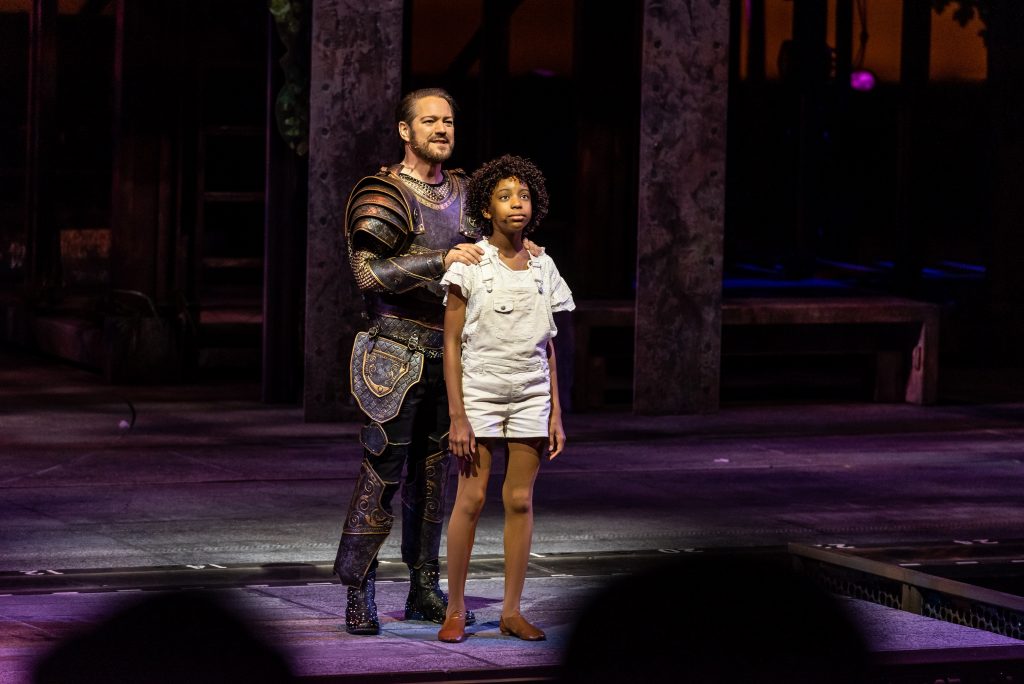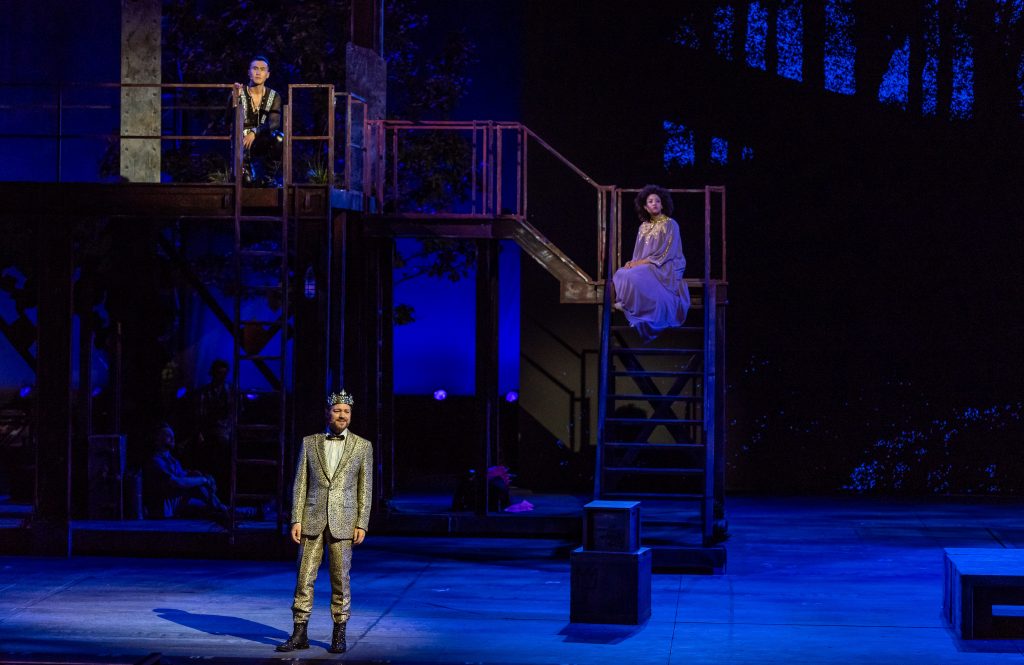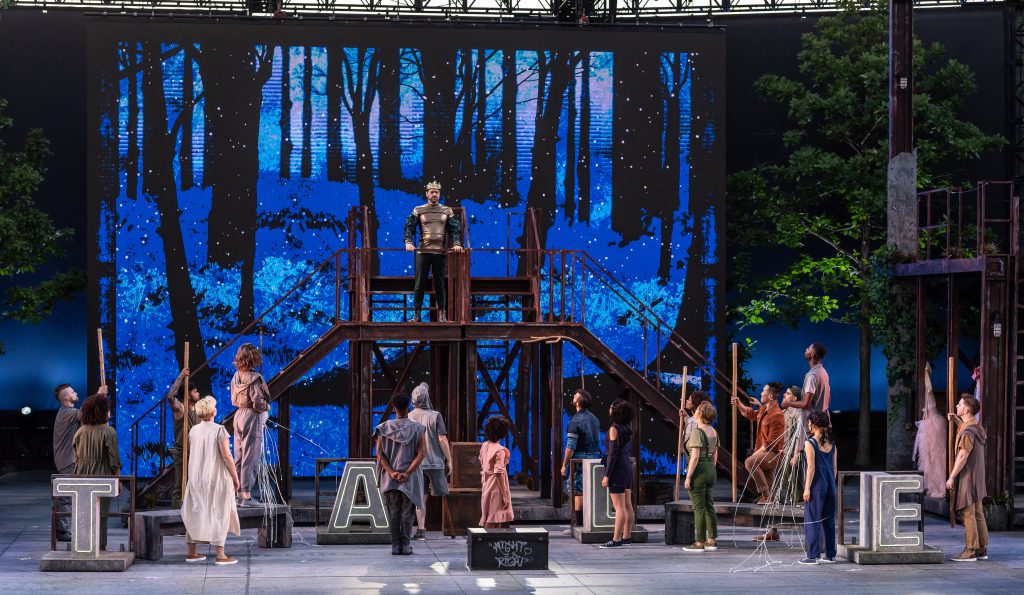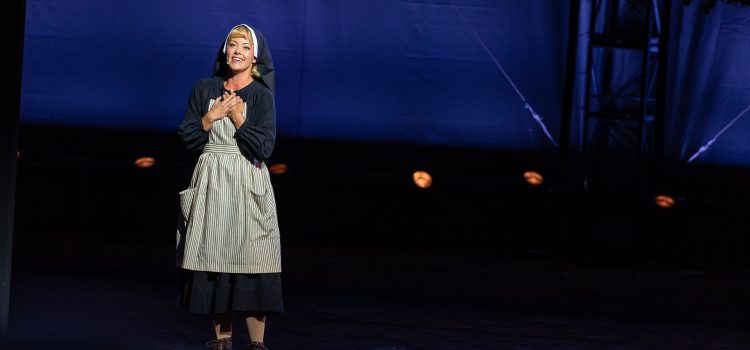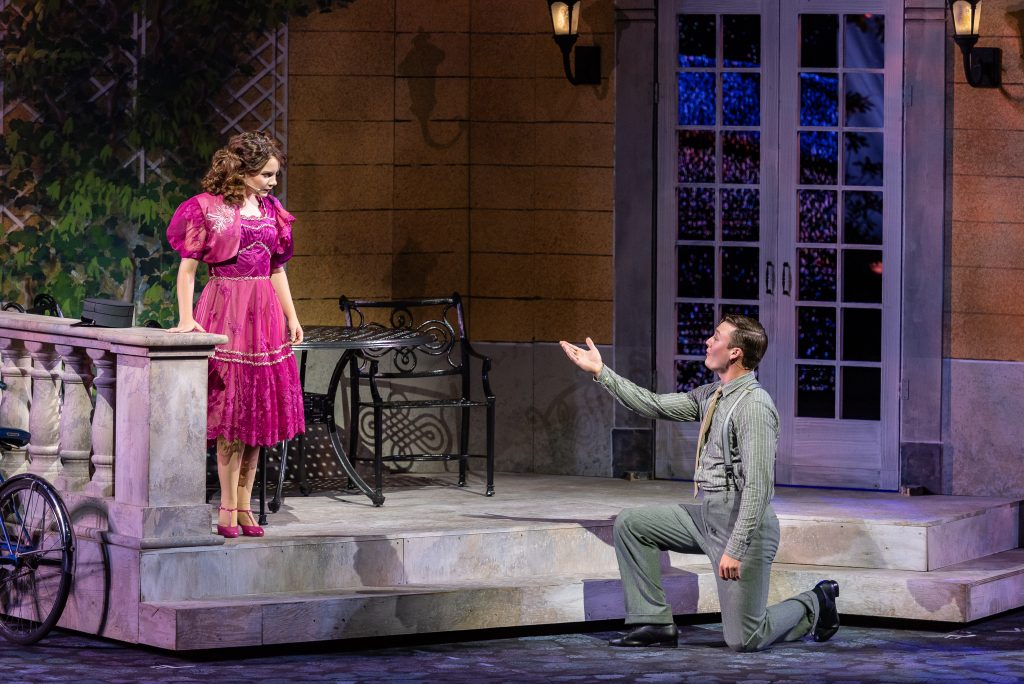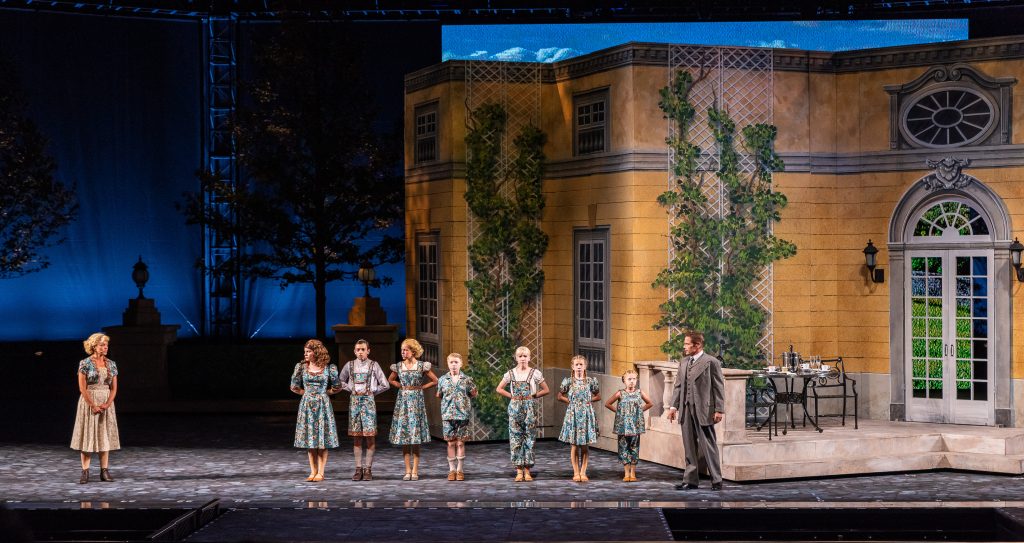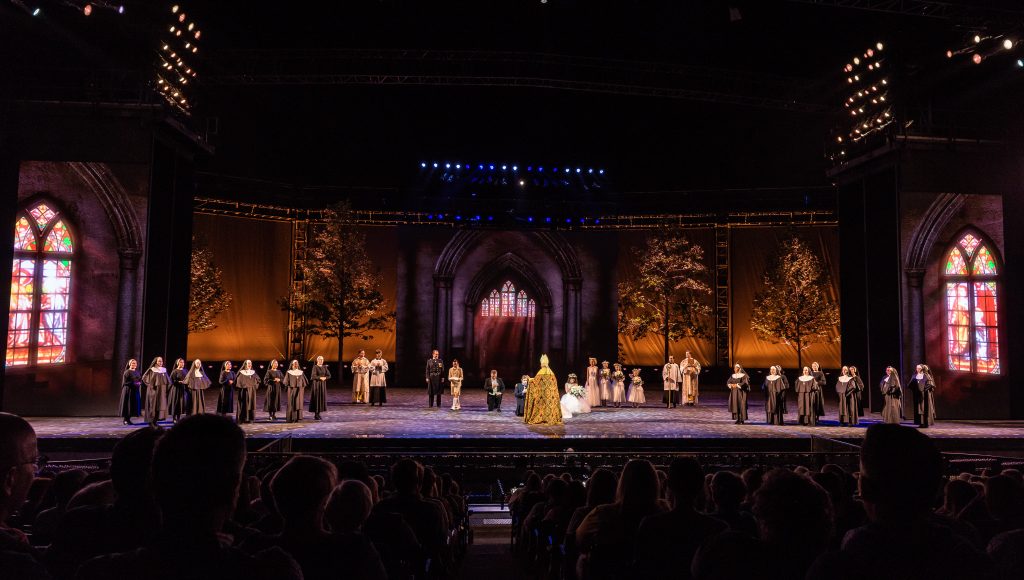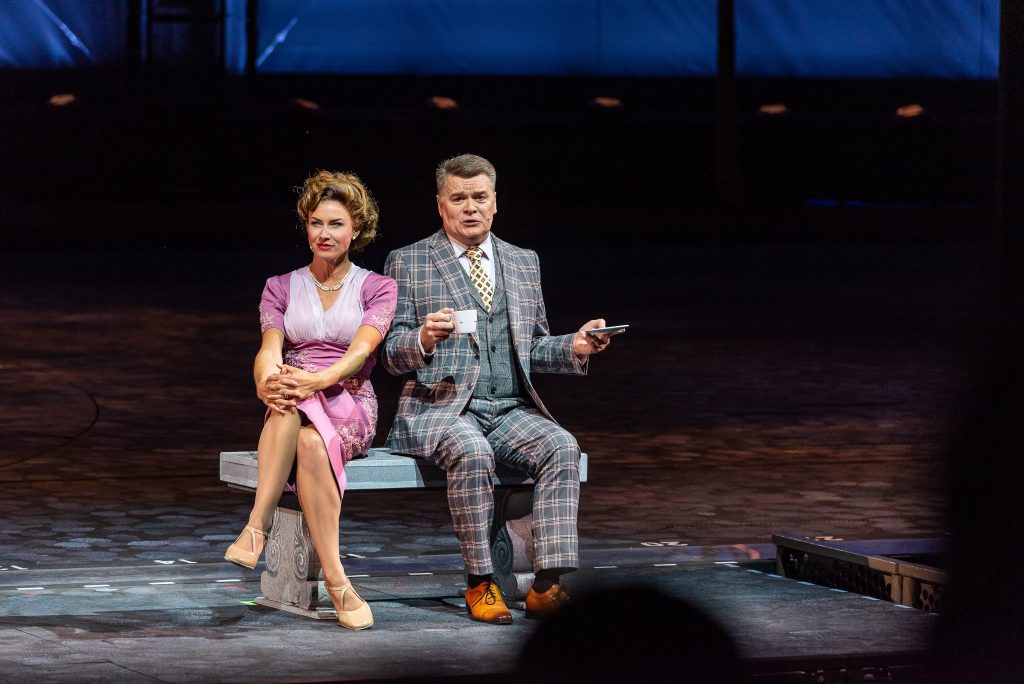When Disney’s Frozen opened Sunday night on the James S. McDonnell Stage in Forest Park, the production debuted cutting-edge digital mapping projections, lasers and other technologies never before used at The Muny.
These stunning, cinematic innovations blend seamlessly with The Muny’s three existing LED walls, hand-painted scenery and other more traditional storytelling techniques to transport theatregoers to the kingdom of Arendelle.
The Muny premiere of Disney’s Frozen is presented by Edward Jones and runs through July 14. Performances begin at 8:15 p.m. nightly.
“This is Muny history — it’s another game changer for the kind of storytelling we’re able to do,” said Muny Artistic Director & Executive Producer Mike Isaacson. “I’m so grateful to our lighting department, led by Rob Denton, our set designers and our creative team for their two-year effort on this production. I’m gobsmacked by the results. St. Louis must come see this magical creation.”
 Watch video from opening night of Disney’s Frozen
Watch video from opening night of Disney’s Frozen
Digital mapping projection transforms ordinary surfaces into dynamic display areas by projecting video or other visual content onto them. For Disney’s Frozen, four 40,000-lumen laser projectors at the back of the theatre are used to create snow, ice, wind and other effects on the booms, stage floor and other pieces of scenery designed by Tijana Bjelajac. The two sets of booms — The Muny’s handpainted backdrops that open and close — are 72 feet wide and 23 feet high.
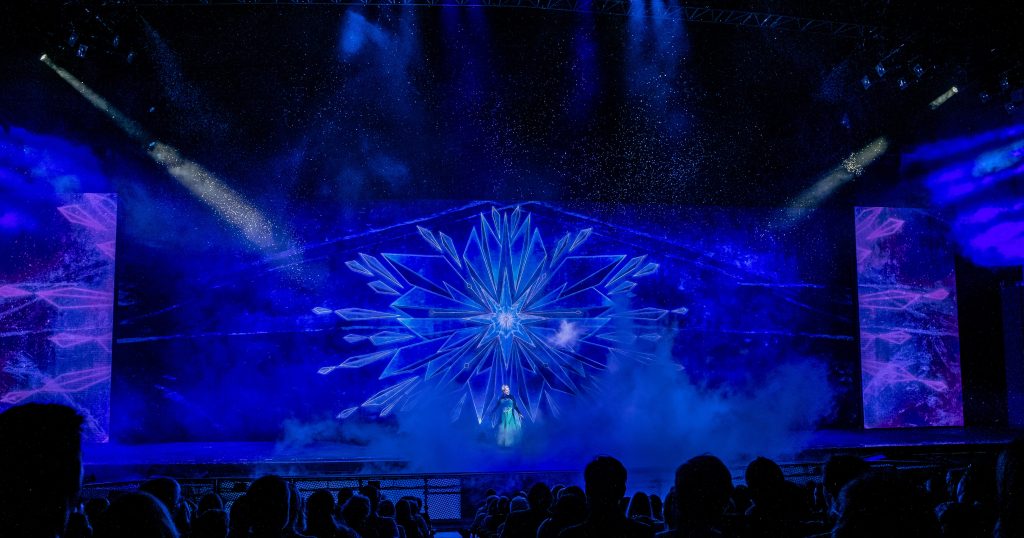
“On a Broadway show, projectors are typically about 20,000 lumens,” said Rob Denton, lighting department lead at The Muny. “But these projections are traveling a distance of about 400 feet, and the images are being laid on top of one another to achieve the intensity we need to be visible before sunset.”
The use of projections at The Muny has been in the works for about two years, and the technology is integrated with existing onstage automation systems — the digital images are able to track the movement of the booms, the turntable and other elements.
In addition to projections, four powerful lasers — positioned onstage and focused on structures at the back of the theatre — help to underscore key magical moments in the production. These lasers are significantly brighter than those typically seen in theatrical or concert settings.
Because The Muny sits beneath multiple flight paths for nearby airports, the use of lasers required approval from the Federal Aviation Administration.
“We’ve known for a few years that Disney’s Frozen was coming down the pipeline, so we took steps early to hit the benchmarks we needed to be able to pull this off,” Denton said. “It’s exciting that we’re ready to make that leap and that we have the right production to debut this technology.”
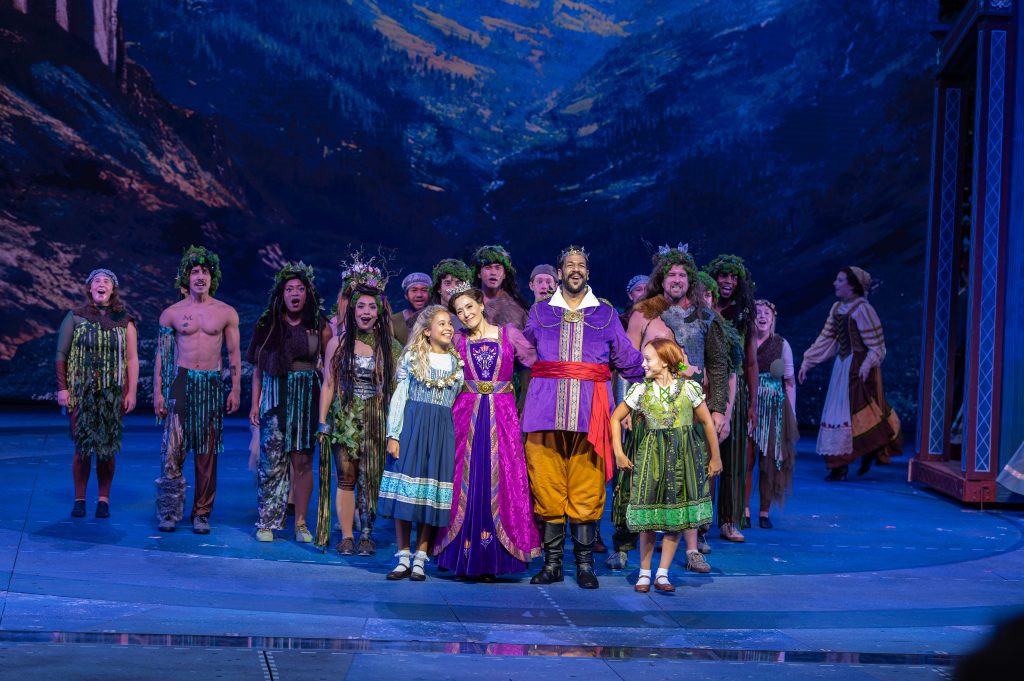
The lighting/video team for the Muny production of Disney’s Frozen includes Jason Lyons (lighting designer), Kylee Loera (projection/video designer), Rob Denton (laser designer, lighting department lead), Benji Arrigo (video department lead), Chelsea Zalikowski (projection associate), Zavier Taylor (associate video designer) and Shelby Loera (associate lighting designer).
Disney’s Frozen is led by John Tartaglia (director). The Muny artistic staff includes Mike Isaacson (artistic director & executive producer), Michael Baxter (associate artistic director) and Tracy Utzmyers (director of production).
Projectors were rented from St. Louis-based Gateway Studios & Production Services. Lasers are rented from Squeek Lights.
The successful introduction of projections and lasers in Disney’s Frozen opens the door to incorporate this technology in future Muny productions.
Over the years, The Muny has continually evolved with the times and technology — from pioneering a revolutionary 48-foot turntable in 1930 to installing its first LED wall in 2012, and culminating in a 2018 stage rebuild that introduced three LED walls, automation tracks to move scenery, and a cutting-edge lighting system designed to deliver both grand spectacle and intimate storytelling. In 2024, the sound system was upgraded, ensuring that each note of every show is crystal clear — from the boxes to the free seats.

About Disney’s ‘Frozen’
Full of magic and humor, Disney’s Frozen features beloved songs from the Oscar-winning 2013 film, along with a dozen new songs written for the stage. In the kingdom of Arendelle, sisters Anna and Elsa grow increasingly distant. When Elsa becomes queen and her hidden powers spiral out of control, she flees, plunging the kingdom into an eternal winter. Determined to bring Elsa home to the castle, Anna embarks on an epic adventure with friends. It’s a powerful tale of sisterhood, acceptance and the meaning of true love. Disney’s Frozen includes music and lyrics by Kristen Anderson-Lopez and Robert Lopez, with a book by Jennifer Lee.
Season 107 at The Muny also includes Evita (July 18-24), Dear Evan Hansen (July 28-Aug. 3), La Cage aux Folles (Aug. 8-14) and Jersey Boys (Aug. 18-24).
Single-performance tickets start at just $21 and are on sale now at muny.org or metrotix.com, by calling (314) 534-1111 and at the Muny Box Office, located at 1 Theatre Drive in Forest Park.
A 20% group discount is available for parties of 15 or more. To start the free reservation process, visit muny.org/groups or call (314) 595-5708.
Visit muny.org/frozen to read content notes and more for Disney’s Frozen; watch In Focus , a Muny original series; and hear Muny Unscripted, a new podcast available exclusively on Spotify.
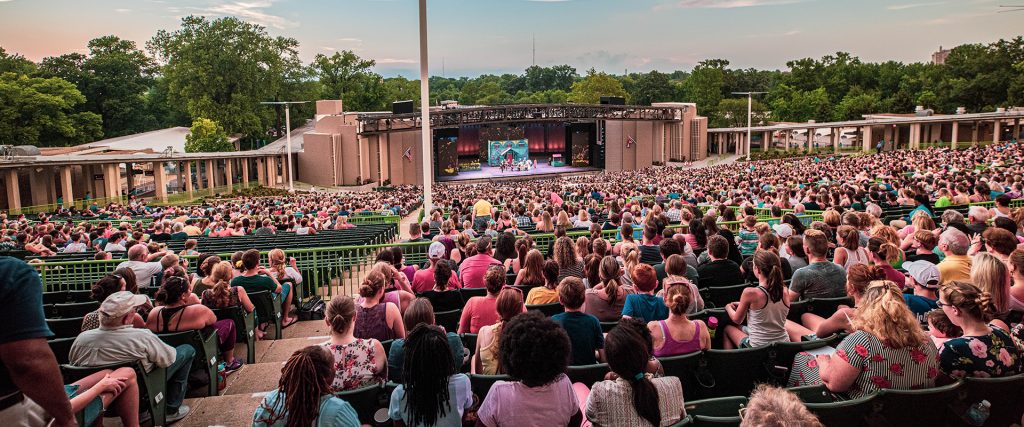
About The Muny
Now in its 107th season in St. Louis, The Muny — the recipient of the 2025 Regional Theatre Tony Award — is a 501(c)(3) nonprofit dedicated to producing exceptional musical theatre that is accessible to all, continuing its remarkable tradition in Forest Park. As the nation’s oldest and largest outdoor musical theatre, The Muny welcomes more than 300,000 patrons each summer for seven world-class productions under the stars. Learn more at muny.org, and follow along at facebook.com/munytheatre , instagram.com/themuny and youtube.com/themunytv.

Lynn (Zipfel) Venhaus has had a continuous byline in St. Louis metro region publications since 1978. She writes features and news for Belleville News-Democrat and contributes to St. Louis magazine and other publications.
She is a Rotten Tomatoes-approved film critic, currently reviews films for Webster-Kirkwood Times and KTRS Radio, covers entertainment for PopLifeSTL.com and co-hosts podcast PopLifeSTL.com…Presents.
She is a member of Critics Choice Association, where she serves on the women’s and marketing committees; Alliance of Women Film Journalists; and on the board of the St. Louis Film Critics Association. She is a founding and board member of the St. Louis Theater Circle.
She is retired from teaching journalism/media as an adjunct college instructor.

